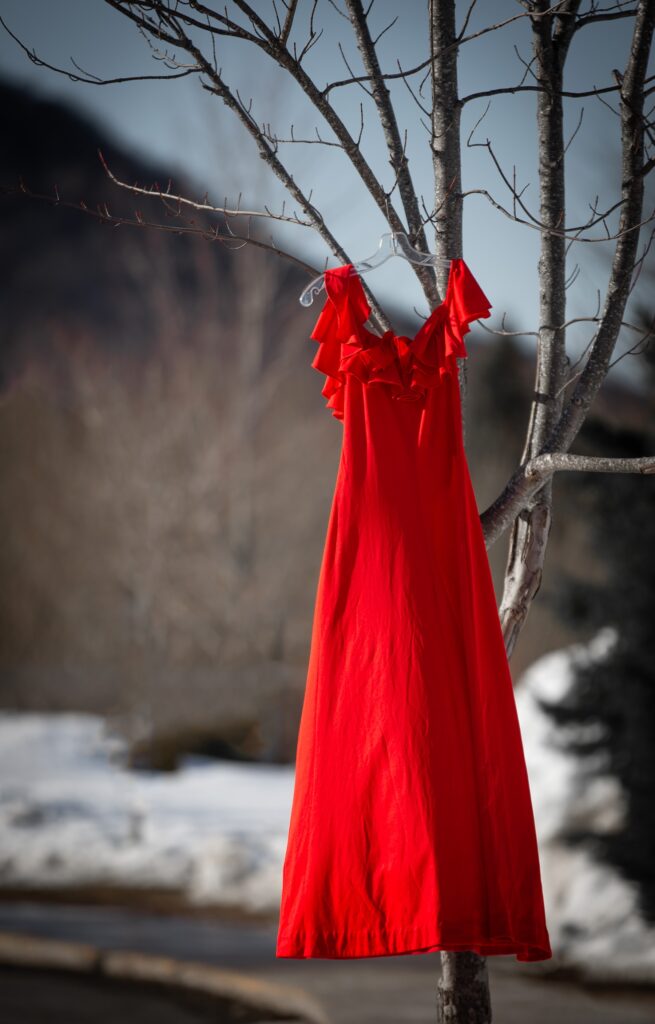History
It originated as an art installation by Métis artist Jaime Black in 2010, called The REDress Project. Jaime Black started The REDress Project to visually represent the crisis of missing and murdered Indigenous women. She hung empty red dresses in public spaces—on university campuses, in trees, and on buildings—to symbolize the lives lost and the ongoing violence Indigenous women, girls, and 2SLGBTQI+ people face. The striking image of red dresses, flowing but empty, became a powerful symbol of both remembrance and resistance.
The REDress Project – Jaime Black
Why Red?
Red was chosen because, the red dresses serve to call the spirits of the missing and murdered back home. It is also a color of power, blood, and connection to life and death.
Red Dress Day Today
Over the years, Red Dress Day has grown into a national movement. It brings attention to the disproportionate violence Indigenous women, girls, and 2SLGBTQI+ people face, much of which is a result of colonial policies, systemic racism, and historical injustices.
In 2019, the National Inquiry into Missing and Murdered Indigenous Women and Girls released its final report, which described the crisis as a genocide and called for urgent action through 231 Calls for Justice. The crisis of missing and murdered Indigenous women, girls, and 2SLGBTQI+ people is a direct result of colonization. In Canada, over 60% of Indigenous women have faced physical or sexual assault in their lifetime, and this violence deeply affects their health, access to care, and overall well-being.
On Red Dress Day, and every day, we honor the lives lost, support the families and communities affected, and continue to raise awareness about this national tragedy. You can show your support by wearing red, learning more about MMIWG2S, and joining local events to commemorate this important day.
How To Get Involved
Information: Learn more about Red Dress Day and/or access support: https://cihr-irsc.gc.ca/e/52964.html
Participation: Wear red and/or participate in a walk or event in your community
Discussion: Engage in dialogue with others to honour and reflect
Donation: Many organizations are dedicated to supporting Indigenous women and addressing the MMIWG2S crisis. You can find a list of Indigenous charities on CanadaHelps


